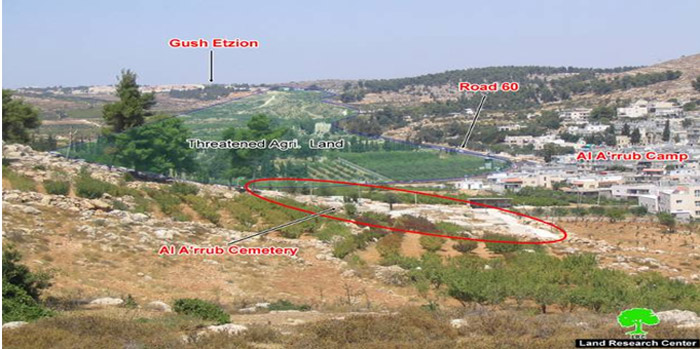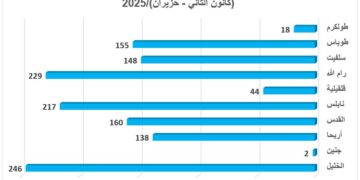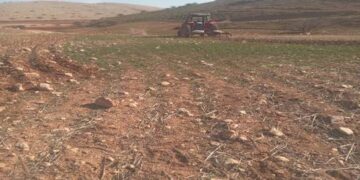Photo 1: The geographical location of Wadi Shkheit – Beit Ummar, Hebron. .
Violation: Israeli colonists dump their sewage and waste water towards large agricultural areas.
Date: October 17th, 2010.
Location: Wadi Shkheit in the town of Beit Ummar – Hebron District.
Perpetrators: Colonist from Kfar Etzion colony.
Affected: Members of Al Sabarneh clan.
Preface:
The town of Beit Ummar is an agricultural town which is located north of the Hebron District. It is a mountainous area that is famous for its grapes, citrus and almonds. It is located 920 meters above sea level and has a rainfall rate of 590 mlm per year. Its population is approximately 15,000 and its total area is 21,285 dunums.
As is the case with other Palestinian towns and villages, the town was subjected to numerous attacks and violation by both Israeli colonists and occupation forces. The particularity of Beit Ummar is that it is surrounded by the Gush Etzion colonial block from the north, the colony of Karmi Tzur from the south in addition to by-pass Road 60 in the east which forms a barrier for the natural growth of the town. There are plans to confiscate additional lands to enlarge the by-pass road. This, in turn, would also lead to the demolition of 12 homes and the placement of cement blocks along the Road which constitutes an additional suffocation measure against the town. To top all that, there are a number of military observation towers and points that surround the town from all different directions as an evidence of the presence of the occupation and its interference in all life aspects of the town’s residents.
In continuation of these violations, Israeli colonist from the colony of Etzion pumped their sewage and waste water into Palestinian lands planted with grape vines and almond trees. The pumping took place over a two day period starting on the 17th of October, 2010. The following report tries to assess the damage caused by the sewage and affluent pumping.
Details:
On the 17th and 18th of October, 2010, colonists from the colony of Kfar Etzion pumped their sewage and wastewater towards Palestinian lands planted with grapes and almonds which caused irreparable damage to 30 dunums of lands owned by Beit Ummar residents.



Photos 2+3+4: The sewage flowing into Beit Ummar lands.
Upon the visit of Land Research Center (LRC)’s field team to the location on Sunday the 17th of October, 2010, the affluent was still flowing from the colony into the affected lands. A vehicle driven by a colonist was parked next to the colony’s sewage storage tanks which points to their direct involvement in the crime.
On the 18th of October, 2010, the colonists opened the valves once again and allowed the affluent to spell unto Palestinian lands causing additional damages. In addition, 5 colonists stole a bulldozer owned by Mr. Yousf Muslih Awad that was present in the location as well as a DAF 430 truck. Mr. Mohammad Ayyad Awad, the spokesperson for the Palestine Solidarity Project, indicated that the colonists beat up Mr. Awad and called for Israeli occupation soldiers who arrested him and took him to the Gush Etzion detention center.
Photo 5: The bulldozer before it was stolen. .
This was not the first time that the colonists have opened their sewage unto this land as a similar attempt has taken place back in May 2010 which caused similar damages. Owners of the damaged lands include Mr. Hasan Ammar Sabarneh, Mr. Mahmoud Ammar Sabarneh, Mr. Mustafa Sabarneh, among others.
Environmental Damage due to Affluent Discharge:
The chemical makeup of the sewage and waste water is complicated as it contains organic, non-organic as well as salty materials and microorganisms. These materials have caused the following:
-
Extensive damage to the grapevines as the sewage formed pools beneath the vines leading to its total paralysis. Currently, all of the affected vines have to be replaced as it is useless to try and revive them.
-
Polluting and damaging the agricultural soil as the heavy elements and salts affect negatively the makeup of the soil for an extended period of time.
-
The spread of diseases for both humans and the plants.


Photos 6+7: Pools formed by the sewage in the agricultural lands.
Economical Damages:
The concentration of affluent in the soil over an extended period of time causes a reduction of the ability of the land to produce. Also, it reduced the desirability by the consumers to purchase products known to them that has come from contaminated lands.
|
Damaged Area in Dunums
|
No. of Trees
|
Average Age of the Trees
|
Average production Years Per Tree
|
Average Production in Tons
|
Average Income Per Dunums in US Dollars
|
Total Loss in US Dollars
|
|
30
|
1,800
|
15
|
30
|
2
|
540
|
324,000
|
It is worth pointing out that soil treatment at this stage is not being considered due to the high cost associated with the effective employment of modern technology to carry out the task.
Health Damages:
The formation of sewage pools constitutes a health threat to the Palestinians living nearby. Bad odor and the spread of mosquitoes and the tendency to use the said lands as a garbage dumpsite are all potential sources for the spread of diseases and other infections.
Pic 8+9: Sewage pools in an agricultural land during its rehabilitation.
The Affected Lands:
The area of Wadi Shkheit is located north of the town of Beit Ummar. It is a fertile land that is planted with a large number of grapevines as well as with the different types of almond trees. The Wadi is located at the edge of the colony of Kfar Etzion and it extends towards Al Arroub Agricultural School and Al Arroub Refugee Camp. The Wadi is threatened by an Israeli plan to enlarge the by-pass Road 60 on its expense.
Photo 8 : The threatened lands by the proposal to enlarge the by-pass Road 60.
Photo 9: The sewage treatment unit associated with the Gush Etzion colonial block.
Photo 10: Pools for the sewage and wastewater stemming from the Block.
























